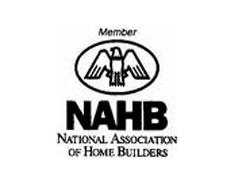NAHB Urges Congress to Support Green Building
Jones said that federal tax credits encourage the construction of new energy efficient homes, promote the use of energy-saving home improvements for existing homes and spur new innovation that will result in even greater energy savings in the residential built environment.
He said Congress can foster private sector innovation by keeping the market free of mandates, striving towards the greatest energy- and resource-efficient buildings available, allocating funds for providing education and training in green construction on a broader scale, and extending and expanding federal tax credits that passed as part of the Energy Policy Act of 2005.
Jones also outlined how NAHB members have been in the forefront during the past decade in promoting and developing energy-efficient and environmentally-friendly construction techniques for the mainstream home builder.
“More than 100,000 homes have been built and certified by voluntary, builder-supported green building programs around the country since the mid-1990s,” Jones said.
“
NAHB members, the majority of whom are small business owners, currently build about 80 percent of all new homes in the
“By the end of this year, more than half of our members will be incorporating green practices into the development, design and construction of these new units,” said Jones.
“While media interest in climate change and global warming is a relatively recent occurrence, NAHB has been consistently ahead of the curve in working to develop affordable, energy-efficient and environmentally construction techniques. In 2008, we will be hosting our 10th annual National Green Building Conference in
NAHB is also collaborating with the International Code Council to bring uniformity to sustainable building by developing the first and only national consensus-based residential green building standard that will be certified and accredited by the American National Standards Institute and based on the two-year-old NAHB Model Green Home Building Guidelines, Jones said.
Encompassing single and multifamily construction, remodeling and land development, the National Green Building Standard is expected to be completed in early 2008.
“Ultimately the goal is to develop a standard that is flexible enough to adjust to the various resource and energy concerns in the varying climate zones around the country, while at the same time encourage innovation in green technology that is already dramatically shifting the market,” he said.
Jones pointed out the advantages of NAHB’s guidelines, unveiled in January 2005 and derived from a consensus of more than 60 industry stakeholders, including environmentalists, building product manufacturers, architects and research consortia.
“
